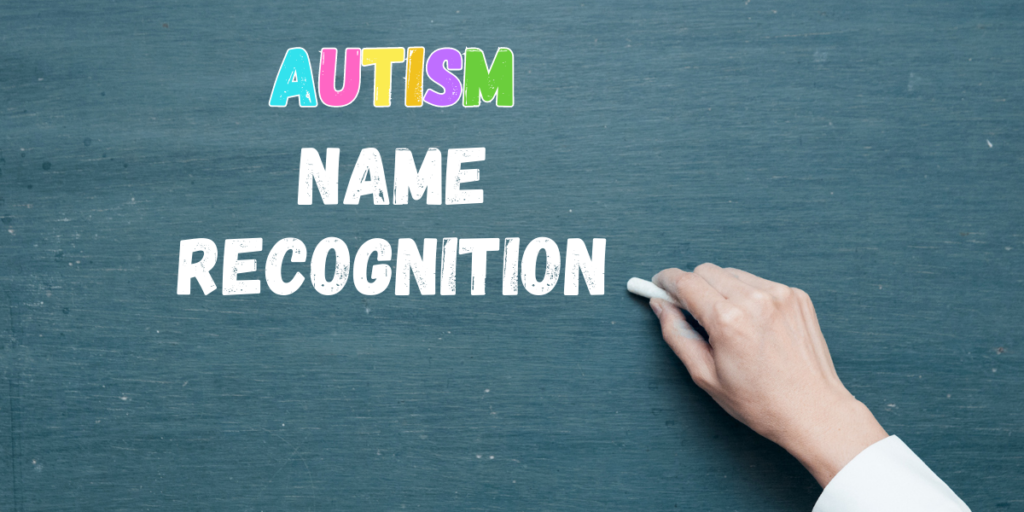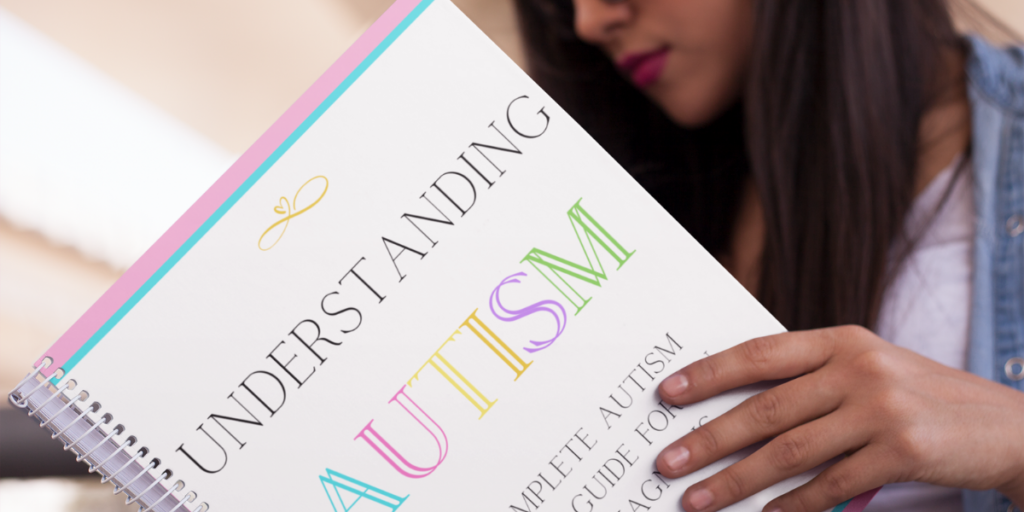
Understanding The Autism Spectrum Disorder within Your Child
The Autism Resource Guide for Parents caring for an Autistic Child will help you understand your amazing individual with specific needs throughout your journey. You will create a personalized Autistic Manual for your child with tools I use on a day-to-day basis!!! Are you ready?
I am a parent whose child was diagnosed with Autism at age two. I didn’t understand what Autism was nor did I understand what role it plays within my daughter. However, I wanted to understand everything. What it was? How does it affect my daughter? And ultimately, I wanted to know how to meet her Autism needs with an understanding of both the diagnosis itself and the diagnosis within her.
Understanding The Autism Spectrum Disorder
In order for me to understand The Autism Spectrum within my daughter, I needed to understand The Autism Spectrum Disorder as a whole. So I began to research Autism. I have learned that Autism can be presented distinctively and differently within each individual. You may have heard this already, but not all children with Autism will have the same behaviors, signs, symptoms, likes, dislikes, favorite food, favorite T.V show, and so forth. As so for every human, we all have our own unique characteristics, personality, and specific preference.
Researching Autism as a whole taught me the basic early signs and symptoms, what to look for, and red flags that are commonly shared amongst a lot of Autistic children. However, some of the things my daughter was doing weren’t seen during my research. I started to think, well how will I help her if I don’t understand or have the resources to help me understand. I knew in my heart how bad I wanted to know her and understand her, so it was now time for me to understand The Autism Spectrum within my daughter.
How to understand the Autism Spectrum Disorder?
Researching Autism will help you become familiar with Autism and the different levels of Autism. The research will give you the knowledge needed to understand the roots and even the tree trunk. However when your get to the branches it may get a little confusing, but continue to research all avenues available. Currently speaking and looking back a year ago, I have found parents and educators who have shared similar and the exact same symptoms, behaviors, and so forth. And we exchanged tips, strategies, and interventions that helped and some that didn’t help.
Autism: Short Story
I know you’re thinking “What is an Autism Manual? Or “Wow, I finally found a resource that will help me understand my child”. If your looking for a resource to give you guidance and direction to understand Autism and how it presents itself within your child, you are at the right place. The Nurturing Autism complete guide will help you uncover and understand your child.
At age two, my daughter was diagnosed with Autism. The Developmental Pediatrician recognized her uniqueness and was amazed by her functions and personality. Concluding, it was Autism. My mind was already prepared for a diagnosis. However, at her 18th-month check-up, I was given a developmental questionnaire. Realized most of the questions I answered were no, not yet, and almost.
The majority of the questions were related to her communication ability. I’m thinking, “really, is my daughter supposed to do all this, she’s not even two yet”. Feeling like this is the most ridiculous questionnaire I ever completed. Looking back now, I realized this was one of the most important questionnaires I’ve ever completed.
A’Llayah’s amazing Pediatrician reviewed my answers, asked a few more questions, and then began writing referrals. In the meantime, I started researching her unique characteristics and specific preferences. I found that most of them were related to Autism. I continued to observe her interests and dislikes. Her individual preferences and personality. I wanted to understand her mind. Became familiar with the things that make her comfortable and uncomfortable. I gathered this information to build a manual that was designed for her.
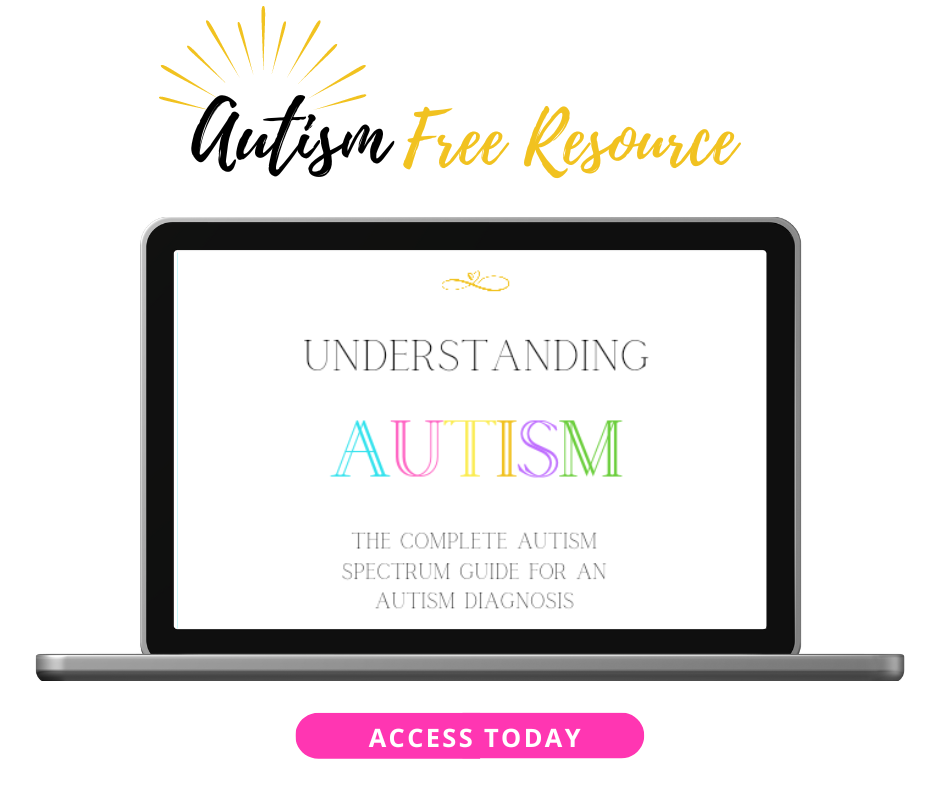
Autism Intervention Inspiration
My daughter started early interventions before age two. She started speech therapy with the most loving and caring therapists. I am definitely grateful for them because they were supersweet. However, my initial perspective of early intervention was that they were going to dictate my parenting skills and negatively critique ALlayah’s personality. I was wrong. I witnessed early intervention as it encouraged A‘Llayah to answer her name, make eye contact with me, follow simple instructions, and finally hear her call me Mama. They taught me so many ways to help her. I literally began to think they were all angels.
The Ultimate Guide to an Autism Diagnosis covers the complete process leading to an Autism Diagnosis and the interventions we considered.
As moms, dads, and caregivers our instinct is to love and protect our children. We view our children as perfect and we believe we can do everything by ourselves. I am here to tell you, “There is nothing wrong with getting help”. To receive the assistance that can give you the knowledge to encourage your child to learn, grow, develop and blossom. Prior to her diagnosis, I can say I was more than ready to walk, run and jump with her as her journey began.
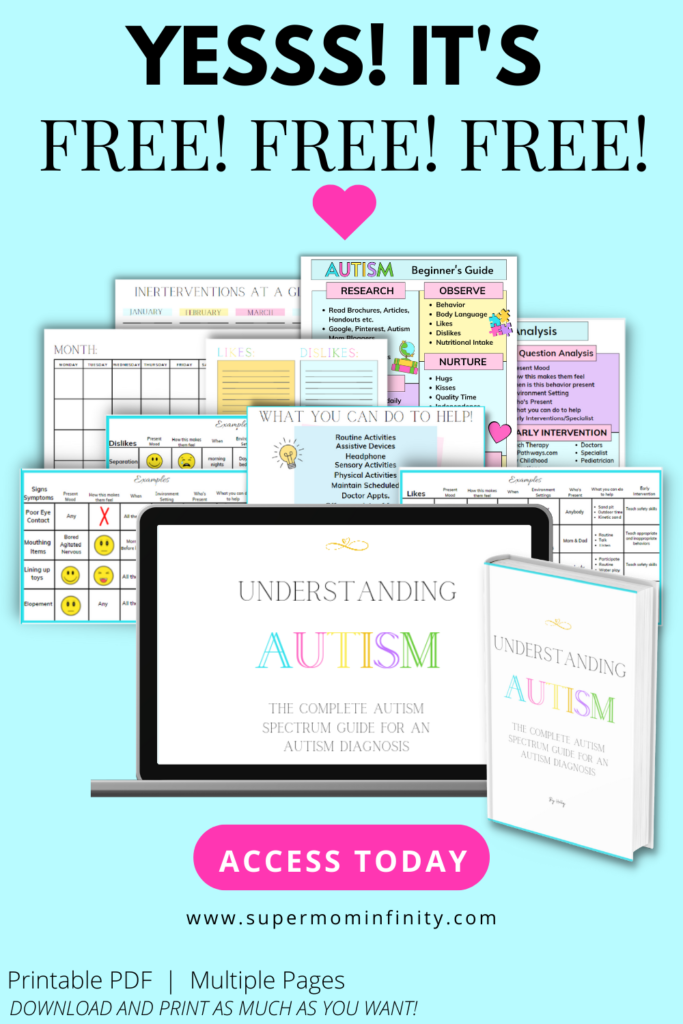
The Complete Autism Spectrum Guide for an Autism Diagnosis
This is your complete Autism Guide with free Templates that will encourage you to understand Autism and Autism within your child. You will feel as if you’re learning your child all over again. This guide gives you the opportunity to learn, understand, and implement needed interventions and also provides you with resources. Your ultimate goal is to nurture your child who has Autism. To give him or her guidance, structure, and unconditional love. Becoming familiar with Autism as a whole and also understanding Autism within your child.
#5 Step Guide to Understanding Autism as a Whole
Your 5 Step Beginners Guide provides you with the initial steps to build the base foundation for your Autistic child. There are 5 very important topics covered in the 5 Step Guide and it will give you the initial steps for understanding Autism and Autism within your child.

#1 Research
Gather all the information you can about Autism Spectrum Disorder. You can even create a resource folder for this information. You will learn common signs and symptoms of Autism that are presented in the early years, the different levels of Autism and so much more. Researching will give the knowledge to learn and understand the Autism Spectrum within your child. Here is a list of helpful resources you can begin to research for more information.
★ Reading Brochures, articles, and handouts
★ Pinterest and Mom bloggers
★ Read, Read, Read
★ Join Autism Groups
★ Ask Questions
This is your initial step to becoming familiar with Autism, exploring the many signs/symptoms, and gaining the knowledge to build the base foundation for your Autistic child. Now that you are familiar with some of the signs and symptoms of Autism, you can observe your child for these signs and symptoms. Be sure to keep in mind that The Spectrum can present itself differently within each child. Meaning you may view other behaviors that are not typically seen. Keep note of these behaviors, you will receive a template to jot down the typical and not-so-typical signs and symptoms. Don’t worry! Your child’s Personalized Autism Manual will help you implement strategies, start intervention, and be a reference you can utilize forever!!!
#2 Observe
Now that you gained knowledge of the many signs and symptoms, it’s time to observe your child for theirs. Observing your Autistic child is a very important measure of understanding him or her thoroughly. You want to pay attention to the little things. Such as their likes and dislikes, throughout their entire day. You can also use a log to document this information. This will give you the opportunity to learn and understand your child. Here are some things to observe:
★ Likes
★ Dislikes
★ Behaviors
★ Body Language
★ Nutritional Intake
★ Pee and Poo output
#3 Adapt
Adapting to your child’s Autism Disorder is also important for you both. Adapting to Autism simply means making daily adjustments within your normal routine to accommodate your child’s needs. You are probably used to a certain routine, however, it’s time to adapt to your child and their needs. In addition, interacting with your child daily on their level. Here are some ways you can adapt to your child and see in the eyes of their world.
★ Activities of daily living
★ Their interest
★ Specific preferences
★ Dislikes
★ Modifications
#4 Nurture
Priceless!!! Nurture your child with love. Offering hugs/kisses for rewards and just simply letting him or her know they are truly appreciated and loved. Nurture your Autistic child with the following:
★ Hugs
★ Kisses
★ Quality time
★ Encourage Independence
★ Talk, Talk, Talk
★ Listen to their voice/body language
★ Nutrition
★ Adequate amount of sleep
All of which are beneficial for you both!
#5 Interventions
Early Intervention was on the top of my list. Even though I can honestly say, I had a pinch of denial and didn’t want to believe my daughter have Autism. I tried every way to make her symptoms appear normal. But when I observed her holding her ear as if she was in pain, I knew then, that I had to help her and figure this out. I would say this phase lasted about two weeks. After that, it was time to go to work learning all things Autism! She inspired me and made me even stronger. Her progress from early interventions is amazing. Here’s a list of early interventions for Autistic children.
★ Speech Therapy
★ Early Childhood Interventions
★ ABAPathways
★ Physical Therapy
★ Occupational Therapy
★ Autism Treatment Centers
★ School District Resources
★ Other ABA Programs
★ Pediatrician
Understanding The Autism Spectrum Disorder within Your Child The Autism Resource Guide for Parents caring for an Autistic Child will help you understand your amazing individual with specific needs throughout your journey. You will create a personalized Autistic Manual for your child with tools I use on a day-to-day basis!!! Are you ready? I am…
Autism Diagnosis “What to do After Your Child is Diagnosis with Autism”? – SuperMomInfinity
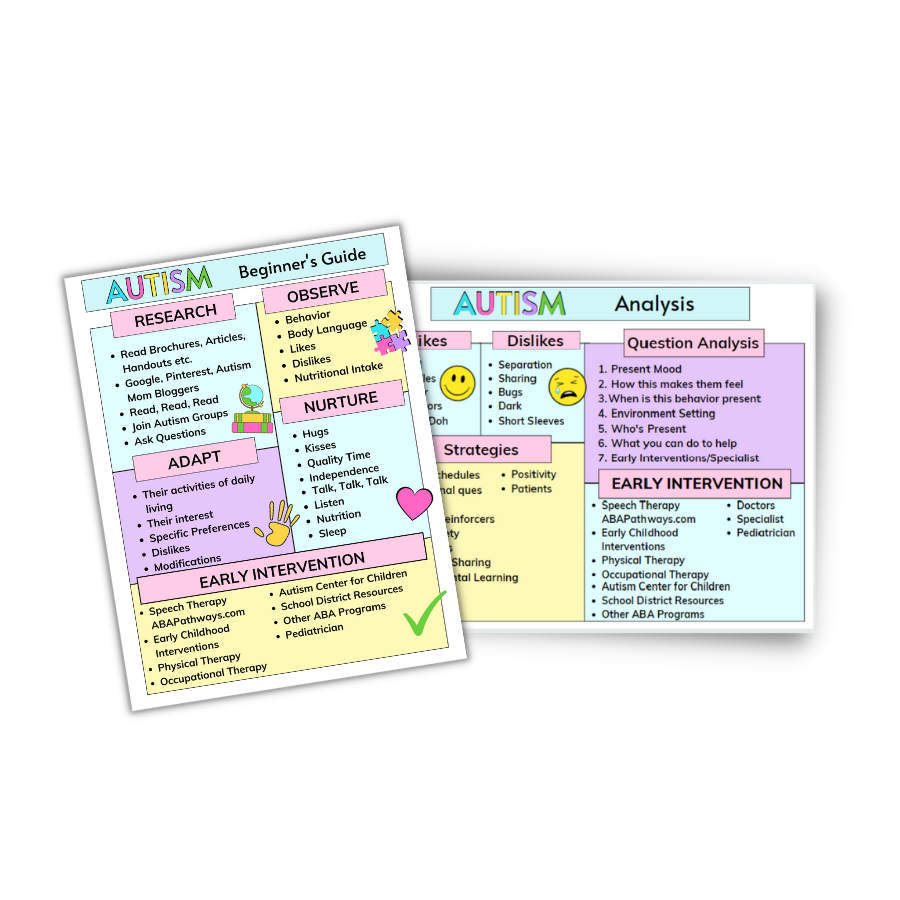
Understanding Autism with an Autism Analysis
To help you understand your child greatly, gather the information and everything you learned from the 5 step guide to help you create an Autism Analysis for your child.
You will receive a list of signs and symptom most of which my daughter have encountered. You will always notice examples of her likes and dislikes and what to do when these things are observed by you. I took all the things, behaviors, and so forth, created the why, what, when and how’s to understand, provide comfort, implement an intervention if needed, or just simply let her be HERSELF!!! My examples will be your guidance in creating a personalized Manual for your child.
Autism Question Analysis for Parenting a Child with Autism
The Autism question analysis for parenting a child with Autism consists of 7 Questions to Help You Understand your Autistic Child. You will answer these questions in relation to the demonstrations of your child’s signs/symptoms, likes, and dislikes. These questions will help you discover the triggers that cause your child distress and enjoyment. You will also begin to learn, understand and help your child manage and function throughout their Autism Journey!!!
Now that you are familiar with a few Autism signs and symptoms let’s use (Covering of the Ears) as a sign we will discuss in the next few sections. This example will be detailed to encourage an open mind outside of your normal thinking to understand your Autistic child.
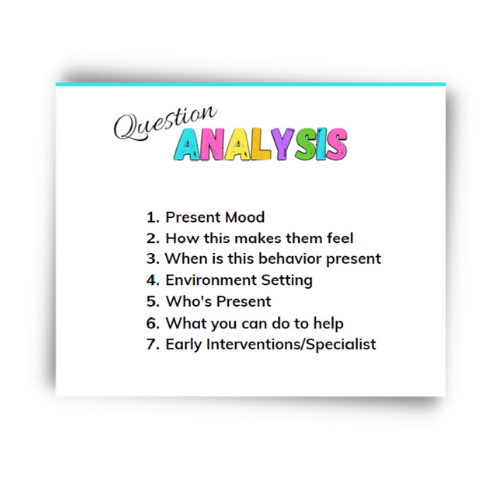
Autism Sign: Covering of the Ears
Covering of the ears is a way your child is trying to eliminate a sound/noise/voice/instrumental/environmental factor/appliance/vehicle/etc, possibly due to discomfort.
1. What is Your Child’s Present Mood?
During the covering of the ears, my child’s present mood was calm and happy. No distress was present until I turned the vacuum on. (Find the cause that activated a response from your child.) The vacuum was the only noise noted during the time your child covered his or her ears. This is just an example, however, many sounds and noises can cause your child to cover their ears. Even sounds in the distance that is not suddenly noticeable to us can cause this response.
It’s important to observe your child’s present mood/behavior in order for you to catch their transition as it occurs. (The behavioral Transition-what is the cause?) Think and observe the environment. You can also make a list of possible factors that causes your child to cover their ears.
2. How does this make them feel?
Covering of the ears can cause your child to become agitated, upset, and even discomfort. Observe your child’s response to understand how the noise of the vacuum/so forth is making your child feel.
3. When is the behavior present?
Typically I vacuum right before bed and my daughter covers her ears only at this time. Yes!!! You are discovering and understanding more and more about your child. The behavior is present around 7:30 p.m. every day.
If this (cause) of your child covering his or her ears occur at the same time every day, around certain people, certain places, etc. continue to keep a log until you narrow down the trigger/cause of the change in mood or behavior.
4. What is the Environment Setting at the time of the Behavioral Transition
Understanding the environment setting at the time of a behavioral transition is an important factor to observe. However, the environment setting can include the temperature of their current environment of where the child is located, a specific place, and even a specific area within the house.
You will use the list of your child’s signs/symptoms, likes, and dislike to answer this question.
However to continue with the environment setting during the time the child covers his or her ears will be inside the house during the time of vacuuming the rug.
5. Who’s Present?
Who is present when your child covers his or her ears?
Take the time to observe the people around your child at the time of the behavioral transition. The individual or individuals near your child may be causing this behavior.
If your child covers his or her ears around a certain person, around crowded areas can tell you that your child’s ears are sensitive to either the tone of one’s voice, the sound of one voice, or the collective noise of people talking, signing and so forth.
6. What you can do to help?
Here are some things that can help this behavior in relation to (Covering of the Ears). Now we know the vacuum and the collective voices of people cause your child to cover his or her ears. You may consider vacuuming at a different time of the day when your child is occupied with a family member or at school. Some things are hard for parents to compromise and every household situation is not the same. However, I will consider my 12-year-old to vacuum while my daughter and I take a walk. This is just another example or idea to help you explore more helpful options.
Crowed areas are sometimes hard to bypass especially if it is grocery shopping day. Earmuffs may be a solution for your child to utilize around crowded areas.
Things that you implement for your child’s safety, well-being, development, and comfort are interventions. #6. Are things you can add, include, adjust, consider, and so forth that you discovered are helpful for your child.
You will also receive two templates that include specific ways you can help!
7. Does my child need Early Intervention or a Specialist?
Early intervention starts with you as the child’s parent. Take the credit for being an awesome loving parent to your child. You are the primary interventionist for the child. Especially if you are here reading this article you are striving to learn and understand more so you can thrive with your child!!!
However, some behaviors, signs, and symptoms require additional intervention we as parents have little knowledge to implement for our children. But guess what early interventions are hands-on and observable so you will become more knowledgeable and be able to continue the intervention strategies at home.
Early Intervention for children with Autism encourages early childhood development and growth. Interventionists are trained individuals and teams that study areas of development, things that are developmentally age-appropriate, and implement teaching strategies to encourage your little one to be all he or she can be.
The specialist may need to be a part of your childcare team as well. If you voice concerns that have not resided with at-home interventions or referred intervention it may be time to seek a specialist in the area of concern. Some causes may be more serve than others and require immediate interventions and specialists to become a part of your child’s care team.
What is an Autism Analysis?
An Autism Analysis is information you retain from your Autistic child. You are digging deeper into your child’s Autism Disorder and discovering the root cause and effect of the Spectrum within your child. This information can be retained during all activities of your child’s daily living. After researching and observing your child’s Autism signs, symptoms, and behaviors, it’s time to understand the “whys”. Here are the specific questions you can ask yourself in order for you to retain this information.
Autism Signs and Symptoms Analysis
Here is an example I have created to give you an overall view of how you will collect and complete your child’s signs and symptoms sheet. Well maybe not complete, but start. I say this because I am still discovering new behaviors and so forth within my daughter as she continues to grow and become more vocal. I use this sheet as a reference and printed duplicates for new discoveries. You also have the opportunity to print as many duplicates as you need.
Facts: If you look at (elopement) you will see the word (overstimulated) in red. It’s amazing how you discover the (why factor) of why your child demonstrates this behavior. Even if you are not able to connect the dots or find the root factor, sharing all the things you collect on this template with your child’s care team will help experts discover what we can’t see or have a lack of knowledge in.
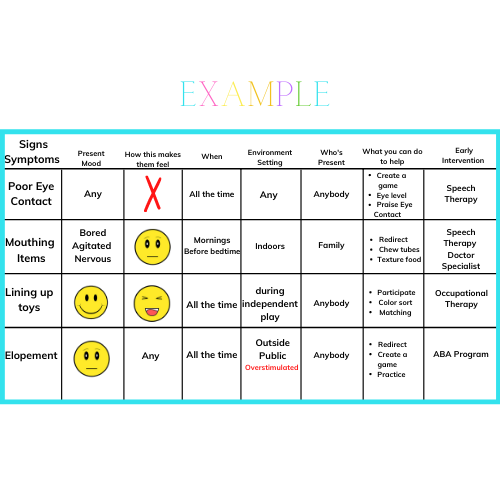
Autism Likes Analysis
Here are the things my daughter likes and the things I try to include more of. Anything sensory is definitely her favorite. I have always noticed how she would migrate to the sand at the park, bypassing her peers just to rub her hands in the sand. If your child loves messy sensory items like my daughter here are some of our favorite products you may consider.
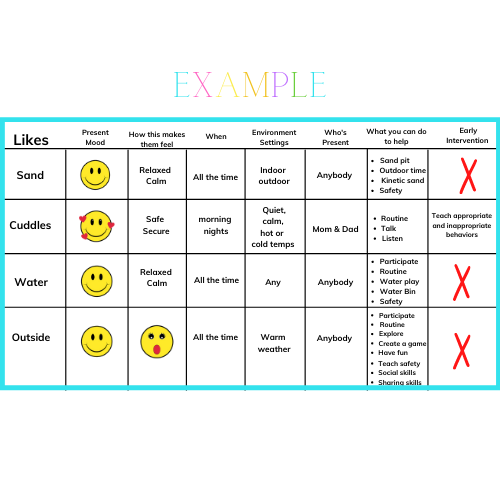
Understanding Dislikes
Understanding your child’s dislike will help you understand triggers that cause a behavioral change. You will be able to view when, where and why dislike occurs. You will also be able to prevent, make adjustments, and implement interventions if needed. Dislikes of your child are the things that commonly cause your child distress, agitation, anxiety, and even fear.
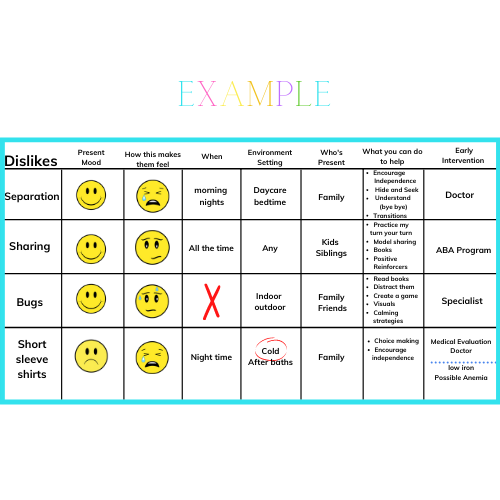
Autism Manual Templates for You
You will receive 3 templates to create your child their very own Autism Manual. After you download the pdf file you can also print a duplicate copy of the handouts. Again, I am so excited to have created this for you and a resource that is so helpful for me!
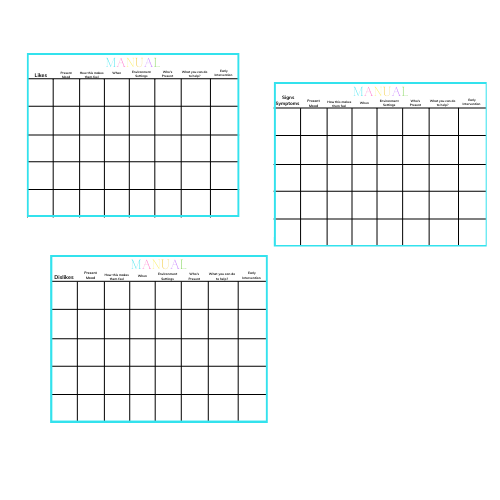
Should I Create an Autism Manual for my Autistic Child?
The Answer is Yesss! Of Course or Why Not? This resource has been revised and edited multiple times to meet the specific needs of your child with Autism. An Autism resource that you have the opportunity to create by observing your child, his or her likes, dislikes, and signs and symptoms. The Autism Manual Guide and Templates are free for you and encourage you to understand the Autism Spectrum within your child.
The information you observe and collect can be shared with members of your child’s care team. Your child’s Pediatrician will be amazed at all your commitment to understanding and helping your child. Your child’s provider will also be able to review everything within your child’s Manual to better assist with your child and his or her needs. The information you collect throughout will also help you find the appropriate Interventionist and Specialist for your child.
Autism Calendar
Within this resource, you will receive a Calendar and Intervention at A Glance template to help your keep up with your child’s monthly appointments and interventions.
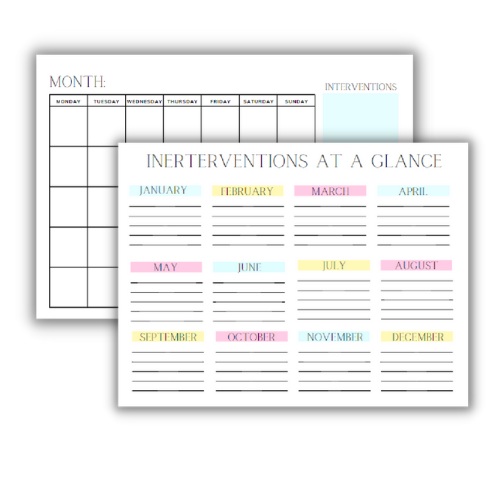
Understanding Autism: Create Your Child Their Very Own Autism Manual
You deserve to understand Autism as a whole and the Autism Spectrum presented within your child. This Free Autism resource will help you do just that. 🥰
Your Free Gift
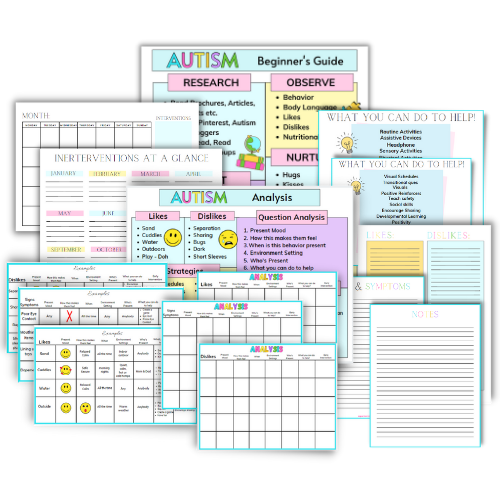
Autism Manual Guide and Templates!
Autism Manual
You will learn and understand your child inside and out. I highly recommend viewing the partnering post leading up to this post if you haven’t already. I will love for you to hear my story ❤ I also cover very important information that can help you along the way. I truly hope this resource be of great benefit throughout your Autism Journey!!!
- The Ultimate Guide to An Autism Diagnosis
- What to do After Your Child is Diagnosis with Autism?
- Your Autism Manual Guide and Templates!!! You are Here.
Nurturing the Minds of Early Learners, Special Needs, and Autistic Children
Discover learning resources for your child at SuperKidsInfinity, where we Nurture the Minds of Early Learners, Special Needs, and Autistic Children.
#5 Autism Name Recognition Strategies: How to Encourage Autistic Children to Answer to their Name
Name Recognition Strategies for Autistic Children Name Recognition is an important aspect of your child’s…
Mr. Potato Head | Teach Toddlers Communication Development with Mr. Potato Head
Teach Speech and Language Skills with Mr. Potato Head Mr. Potato Head has many assets…
Autism Diagnosis “The Ultimate Guide to An Autism Diagnosis”
The Ultimate Guide to an Early Autism Diagnosis Hi, I’m Holly and I will be…

